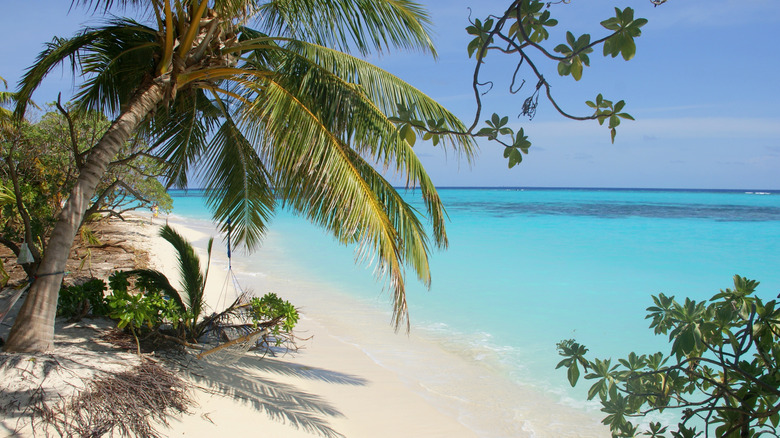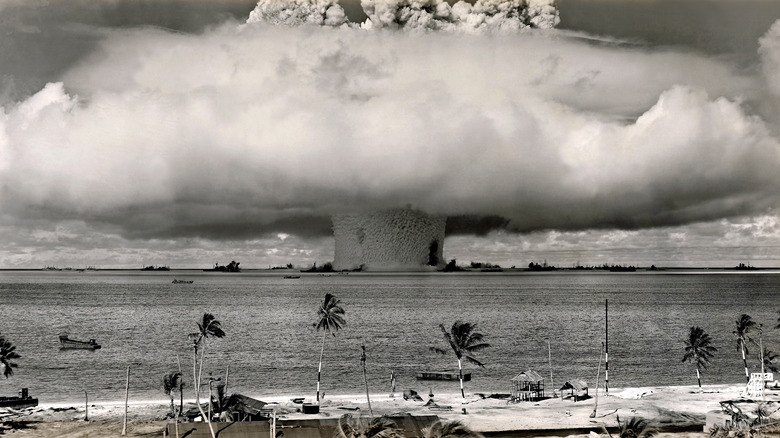This Pacific Ocean Island Is One Of The Most Dangerous Places In The World
Bikini Atoll is a large reef formation with a surface/land area of a little over two miles (via Britannica). Until 1946, it had supported a population of settlers from the nearby Marshall Islands. In spite of its small size, the land was able to support a variety of crops common among Pacific Islanders, including but were not limited to coconuts, bananas, taro, papaya, and pumpkin (via Bikiniatoll). However, in the year following World War II's conclusion, the islanders, numbering 167 people, relocated after the United States informed them that their island was to be made into a nuclear testing site (via Orange Smile).
It was not until 1958 that the last of the 23 subsequent tests were concluded, leaving immense levels of radiation in the region. Original residents did briefly return from neighboring islands and abroad, once told that levels had reached safe levels by 1970. However, after just a few years, had to leave when it became clear that this assessment was dramatically off.
Almost nobody has returned to Bikini Atoll
The radiation and its terrible effects were not limited to Bikini Atoll, either (via the Bulletin of Atomic Scientists). In many tests — namely the Castle Bravo test of 1954 — the amount of fallout was far greater than anticipated and the inhabitants of many islands were exposed as well, resulting in varying levels of damage to environmental and human health. While the amount of radiation is not terribly high compared to places like Chernobyl, it is still well above safe levels, and as a result, virtually none of the original human inhabitants of Bikini Atoll have returned even though wildlife has (via Phys).
Only a small number of people have resided there as caretakers; some of whom have been original residents and their descendants. In addition to the destruction wrought upon the island and its people, the tragedy has also had some impact on pop culture. The swimsuit known today as the "bikini" was named as such by its designer Louis Reard, per Smithsonian Magazine, and the Japanese film monster Godzilla was partially inspired by the excessive nuclear tests (via Explore the Archive).

